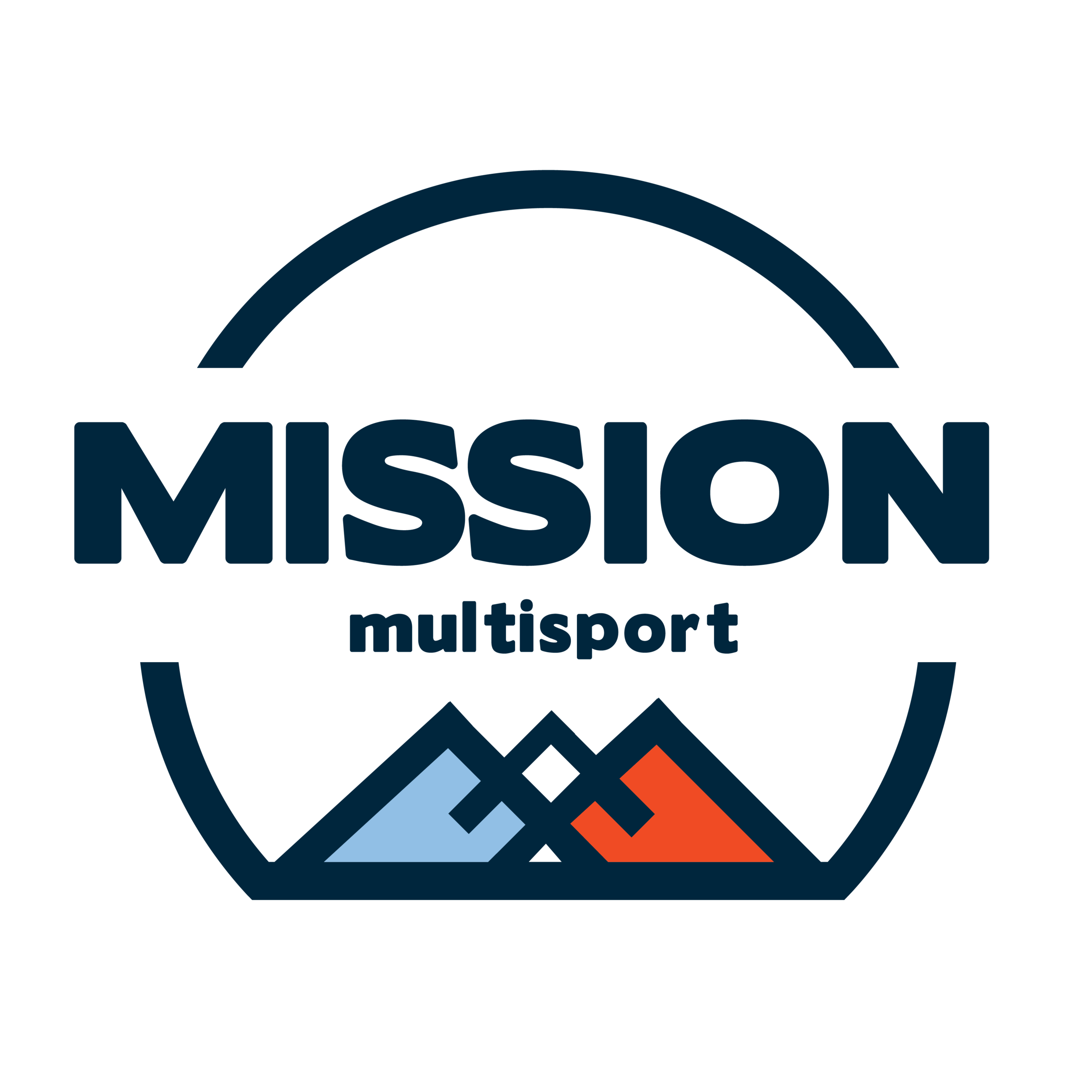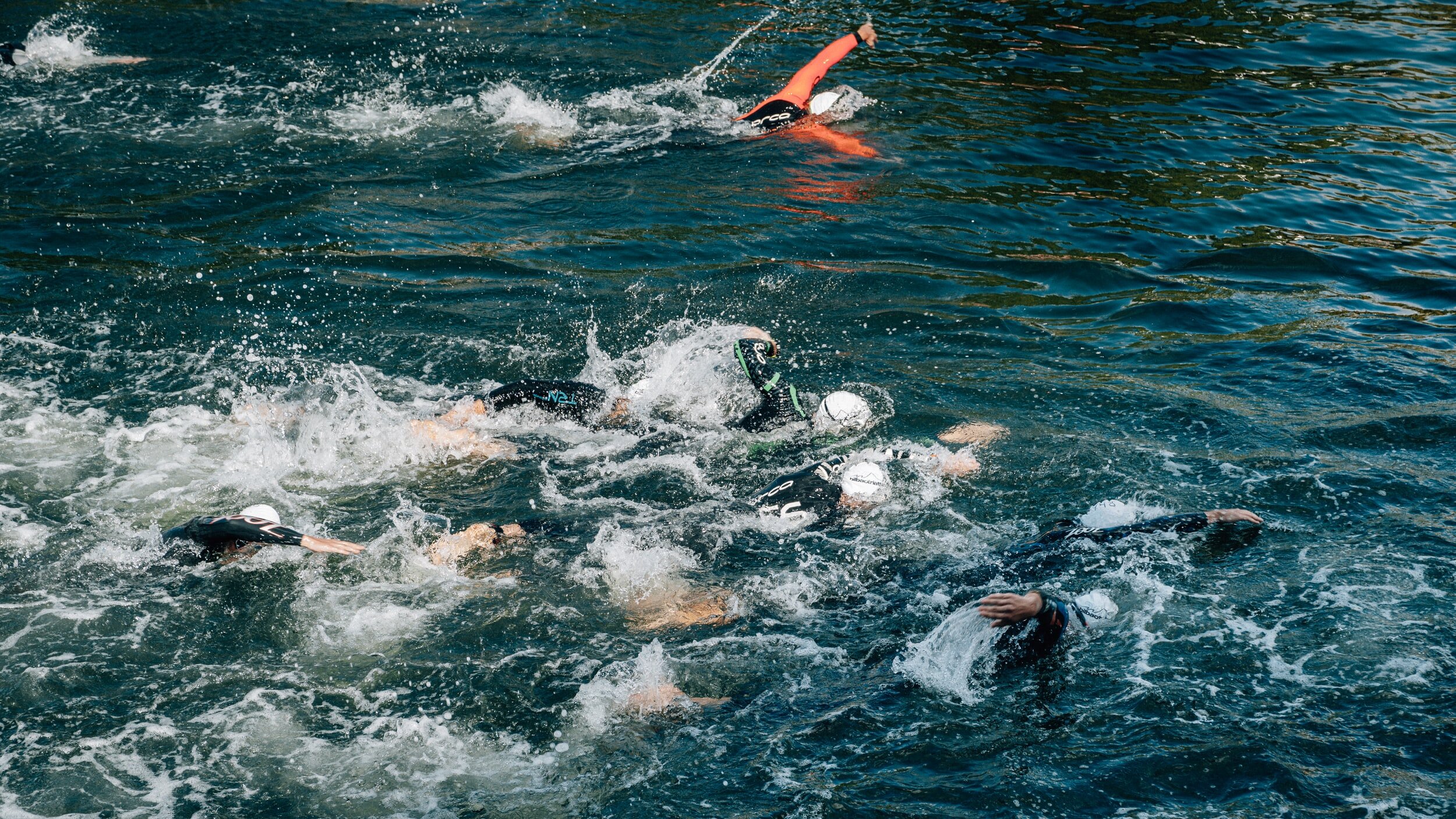How to be Faster, without Training
Ah yes, the moment everyone has been waiting for since they started training! How to be faster WITHOUT training. No this isn’t a joke I’m actually going to give you a few tips on how to be faster without swimming, riding or running more. Now don’t get me wrong the only way to achieve your goals is to train. You need to train a lot, train hard, train smart and continue to push your limits. The larger your goals are the more you need to train but there are ways to go faster on race day without any extra effort during the race.
Draft in the water: Find some fast feet. You can save a little under 20% of your energy by drafting off of another swimmer. At this point that is common knowledge and I’m not telling you anything revolutionary but be careful about the feet you select. First, you might be faster than the athlete in front of you and you’ll be wasting your time drafting. If it seems too easy, it’s too easy. Second make sure they know where they are going. Don’t let someone take you off course. Lastly, practice. You need to practice drafting in the pool and in open water. It’s a tactic that needs to be learned and practiced or else you won’t be comfortable doing it on race day.
“Best advice I can give you here is to ride faster.”
Remember where you racked your bike: We’ve all been there. Ducking under bike racks looking for our bike in a sea of bikes that all look the exact same, frantically searching for your specific slice of carbon fiber. Take a few minutes before the race and walk from transition to your bike, count the number of racks before you get to yours and give yourself a plan. I’ve even taped electrical tape around the end of the rack where my bike is located...don’t steal that from me, I don’t want to see tape all over bike racks at my next race. Remember practice makes permanent and taking those moments to practice running to your bike will help you remain calm while you’re running from the water. You also have to put your bike back in the correct spot! Best advice I can give you here is to ride faster. Less bikes in T2 means it’ll be much easier to find your spot. All kidding aside, take some time to practice your second transition pre race just like you did T1.
Know your gears: You wouldn’t believe how many triathletes have absolutely no idea what size chainrings they have or the range of their cassette. Now is the time to befriend a track cyclist. Track cyclists are masters of knowing how fast and efficient they are in specific gears and you should learn this skill too. It’s extremely likely you’re losing watts due to inefficiencies in your drivetrain because your chain is rarely straight or you’re missing a gear in your rear cassette that would be beneficial to you. Also this isn’t difficult to learn. Google “cycling gear chart” and you’ll find a ton of information and then just take a second while you’re riding and notice if you cross chain or if there is a large power discrepancy between certain gears. Give yourself some cassette options and use different gearing for different courses such as; 11-23 for dead flat courses and 12-28 for hilly courses. Get the most out of your drivetrain. Oh don’t forget to clean your bike too.
“Shave your legs, it saves you time.”
Shave!: Shave your legs, it saves you time. Roughly 1 second over 20 mile BUT that’s free speed! I know you’re willing to spend $1,000 on wheels that save you the same amount of time, suck it up and shave your legs.
Fix your position: Stay aero. If you can’t stay aero, practice. If you’re not comfortable in the aero position find a good bike fitter near you so you can be comfortable. Nothing will slow you down as much as getting out of and then back into your aero position. Plus it’s physically taxing to keep sitting up and getting back down into your position. I’m not saying you have to get super long and low (I mean you should...if you can) but find a way to be comfortable and be able to access your nutrition while aero.
Eat and drink: Seems obvious right? You’d be surprised how many athletes don’t optimize their nutrition and hydration plan (hint: it’s like 90%). Dehydration and malnutrition will slow you down substantially during a race that takes anywhere from 8-17 hours. I’m sure you’ve heard someone say “find what works for you” or “it’s so individualized” when it comes to race nutrition. Yeah those phrases are just used to sell you different products. Here’s what works; carbs. A ton of carbs. Water. A ton of water. Caffeine. If you can handle caffeine, rocket yourself to the moon with this stuff during a race. Your body doesn’t know the difference between sugar/carbs from solids or liquids or gels or blocks! That’s what depends on you as an individual. Take in what you enjoy and don’t worry about someone else's plan.
“there just is no need for 5 pounds behind your saddle.”
Coach Jon runs off the bike…don’t worry we upgraded his kit this year!
Stop weighing your bike down with bottles: The easiest way to make your brand new superbike slow is to weigh it down with water. Water is heavy, seriously it’s shockingly heavy. In an Ironman you never, I repeat, never need two water bottles behind your seat. There is an aid station every 10 miles for goodness sake! A bottle between your arms works great and a bottle on the downtube works great as well but there just is no need for 5 pounds behind your saddle.
Get used to running off the bike: You’re racing a triathlon, not a running race. You need to practice running off the bike...a lot. If you’re racing a long course race you should be running after your long ride every single time. You don’t have to run for an hour after the ride (but you can) but you need to run for long enough to know that the calories you took in on the bike will get you through the first bit of the run. Also you need to get used to that terrible feeling the first couple of minutes before your legs come around and you start to feel like you’re running normal.
Dianne races happy…be like Dianne
Be decisive on the run: Don’t skip aid stations. At least get yourself some water or Gatorade at every aid station. When things start feeling like they’re about to go sideways, make a change and don’t hesitate. If the gels you have are starting to turn your stomach, switch to Coke. If you feel like you’re getting dehydrated, up the water intake at the next aid station. Make a change to your plan before it’s too late and you end up walking. You’re going to hit a bad patch during the run just like everyone else will but those who minimize the damage and slow down the least are the ones who succeed.
Stay mentally strong: You’re going to want to stop. Everyone wants to stop at some point during every race. Don’t. I know I know, that’s easier said than done but it’s honestly pretty simple. Just keep moving forward by any means necessary. Some solid advice I received is; in the first half of the marathon don’t be stupid, in the second half don’t be a wuss. Take what you want from that as it might seem a bit harsh but I firmly believe that (almost) every athlete who starts walking too early, regrets it. Keep this in mind when you’re running and riding during training. If you take 5 breaks during your 100 mile ride, you just rode 20 miles 5 times and that’s different from riding 100 miles. If you stop to catch your breath during your runs or take unstructured walking breaks, guess what you’ll do during the marathon. This takes no extra training. It just takes a strong mind.
Above all consistent practice and training are the keys to success in triathlon and all endurance sports. Don’t let simple fixable mistakes on race day negate the work you put in training for your race. Learn about the sport, consult your coach and training group so you can make the best decisions on race day.
Ben Rotherham
Coach, Mission Multisport





